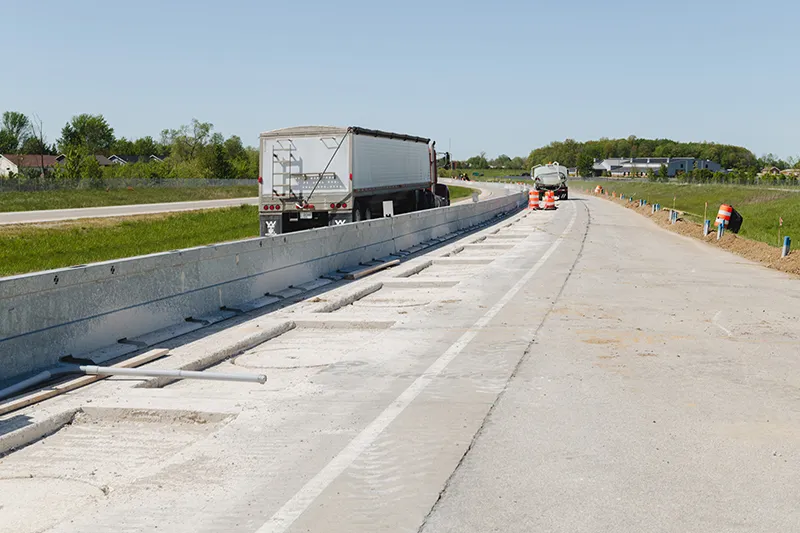

Two recent wireless charging pilot programs show the potential for the technology’s use with commercial EV fleets.
The Indiana Department of Transportation and Purdue University are working to outfit a quarter-mile stretch of U.S. Highway 231 in West Lafayette, Indiana, for wireless charging of electric trucks. A test truck provided by Cummins will drive over this section of road in tests starting next year, according to a Purdue University press release.
Construction of the test road section began April 1 and is expected to continue into the fall. This follows laboratory tests to see if sections of highway concrete and pavement could handle the weight of loaded trucks.

Indiana roadway to be used in dynamic wireless charging test (photo via Purdue University)
The Purdue-designed charging hardware is intended to work at higher power levels than other systems demonstrated in the U.S. so far, the university claims, making it better suited to heavy-duty vehicles. If tests prove successful, Purdue and the Indiana state government hope to add charging to a longer stretch of highway within the next four to five years.
This dynamic wireless charging—in which vehicles are charged as they drive along—has already been the subject of tests and pilot programs in Michigan, Sweden, and Israel. Stellantis tested the idea with an electric Fiat 500 in 2022, and a Ford patent filing indicates the Blue Oval is working on it as well.
Wireless-charging company WiTricity also recently launched a six-month pilot program with International Transportation Service LLC to test wireless-charging tech on a fleet of Ford E-Transit vans at the Port of Long Beach. In this case, vehicles park over a pad to charge, with performance claimed to be equivalent to conventional Level 2 AC chargers.

Ford E-Transit with WiTricity wireless charger
There are several potential benefits of wireless charging, including greater accessibility to charging that could allow for smaller EV batteries, which could in turn reduce the cost and weight of these vehicles. And overall, wireless charging could make EVs more livable on a day to day basis by eliminating cables and connectors.
The higher level of automation allowed for by wireless charging also helps set the stage for self-driving electric cars, as it would remove one more point of human involvement in the process. But self-driving cars themselves must prove to be reliable and commercially viable—definitely not a given.

Source link
#Here039s #wireless #charging #cut #costs #commercial #EVs




